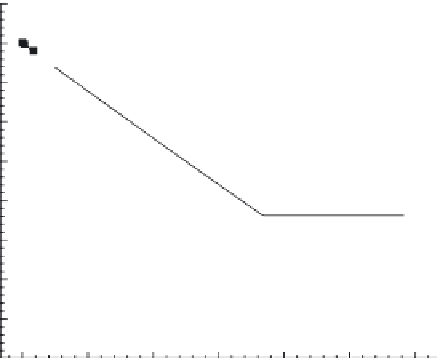Biomedical Engineering Reference
In-Depth Information
Four loading cases are considered to examine the influence of axial
pressure, transverse pressure, electrical field, and magnetic field on bone
remodeling. The results are presented next.
5.5.2.1 Effect of Axial Pressure on Bone Remodeling Process
To illustrate the influence of axial pressure on bone remodeling, the variation
rate of the radii of the inner surface and the changes in the porosity of the
bone material are calculated and shown in Figures 5.10 and 5.11. The applied
loadings are
P
= 1.6, 1.8, 2.0, 2.2, and 2.4 kN; no other loadings are applied.
Figures 5.10 and 5.11 show that axial pressure can strengthen a bone
tissue by the deposition of new bone material in and on the surface of
the bone. Figure 5.10 shows the influence of axial pressure on internal
bone remodeling. The porosity of the bone tissue decreases when the
environmental stimuli exceed the MESm, which is defined as the remod-
eling threshold. Overloads make the bone material denser and stronger.
The elastic modulus also increases, resulting in a decrease of strain on the
bone structure. The environmental stimulus decreases at the same time, as
the strains become smaller.
When the environmental stimulus returns to the remodeling threshold,
the porosity will not change any further. This shows that a bone tissue can
model itself to force the environmental stimulus to revert to the remodel-
ing range. However, when the axial loading is sufficiently high, a further
increase has very little effect on the bone remodeling process. Two factors
0.085
P
= 1.6 kN
P
= 1.8 kN
P
= 2.0 kN
P
= 2.2 kN
P
= 2.4 kN
0.080
0.075
0.070
0.065
0.060
0.055
0.050
0.045
0.040
0
300
600
900
1200
1500
1800
t
(day)
FIGURE 5.10
Variation of porosity
p
for several axial overloads.





















































































